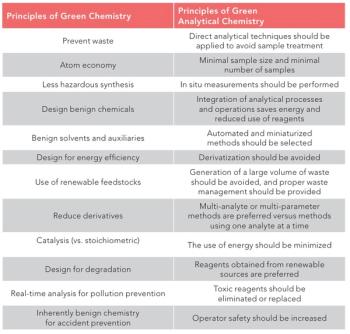
Chinese Cigar Flavor Profiles Analyzed Using GC-IMS
Scientists from Shanghai Jiao Tong University and the Sichuan China Tobacco Industry Company used gas chromatography-ion mobility spectrometry (GC-IMS) to analyze the flavor profiles of different cigars.
In a study led by scientists from Shanghai Jiao Tong University in Shanghai, China and the Sichuan China Tobacco Industry Company in Chengdu, China, gas chromatography-ion mobility spectrometry (GC-IMS) was used to analyze the flavor profiles of different cigars. Their findings were published in the Journal of Chromatography A (1).
Cigarettes and cigars have been important parts of the global consumer goods market. Cigars have complex aroma components, which define the flavor profiles and play a crucial role in consumer decision-making. With living standards and taste profiles continuously changing, studying cigar aroma components has attracted more attention in recent years. Medium to high-end cigars hold unique aroma profiles that are mainly influenced by fermentation and the inherent qualities of tobacco leaves. These aroma components, such as aldehydes, ketones, esters, and alcohols, are formed during the tobacco’s creation and released when smoked.
For this study, the scientists attempted to characterize the volatile aroma compounds that shape the flavor profiles of six different types of Great Wall cigars using headspace gas chromatography-ion mobility spectrometry (HS-GC-IMS) and sensory evaluation. GC-IMS technology is notable in the field of volatile compound analysis, mostly due to its ability to detect and effectively separate volatile compounds; this is done by leveraging changes in the mobility of ionic substances in an electric field. Unlike similar detection techniques, GC-IMS combines the fast response and high sensitivity of ion mobility spectrometry, as well as the simplicity of instrument operation and ease of sample preparation. This technique has been used in the past to screen for early mold markers in cigar tobacco leaves, finding three different chemicals as characteristic markers. With its potential for detailed analysis, GC-IMS has proven advantageous when paired with multivariate statistical analysis, which enables a deeper exploration of sample variance.
The cigars studied were GJ No. 6 (GJ), Animal from the Chinese zodiac (SX), Range Rover No. 3 Classic (JD), Miracle 132 (QJ), Sheng Shi No. 5 (SS), and Red 132 (HS) cigars. This analysis uncovered various characteristic aromas, including tobacco, creaminess, cocoa, leather, baking, herbaceous, leathery, woodsy, and fruity notes. In total, 88 compounds were identified and categorized into 11 chemical classes. The compounds’ quantities varied among the cigars, in a descending order of QJ, JD, GJ, SS, HS, and SX.
24 compounds, such as 2-heptanone, n-butanol, 2,6-dimethylpyrazine, and 2-furfuryl methyl sulfide, were considered key differential components. The volatile components were differentiated using various techniques, including principal component analysis (PCA), orthogonal partial least squares-discriminant analysis (OPLS-DA), and cluster analysis, revealing correlations between sensory attributes, key components, and electronic nose (E-nose). Through the two former techniques, significant separation between aroma characteristics was achieved, with the top ten components primarily contributing to differentiation. These findings show insights into major flavor compounds among cigar samples, linking macro samples with micro-aroma compositions. Correlations were established between sensory attributes, key differential components, and E-nose responses. However, there are limitations to this work. Using ion mobility spectroscopy for characterizing the compounds did not prove entirely accurate, with quantitative results having potential for improvement, the scientists wrote. Further, combining GC-IMS with gas chromatography–mass spectrometry (GC–MS) could enhance accuracy, especially for studies based around Chinese cigars and their flavor profiles.
Reference
(1) Zhou, Q.; Feng, X.; Zhu, Y.; Zhou, C. Discriminative Analysis of Aroma Profiles in Diverse Cigar Products Varieties Through Integrated Sensory Evaluation, GC-IMS and E-Nose. J. Chromatogr. A 2024, 1733, 465241. DOI:
Newsletter
Join the global community of analytical scientists who trust LCGC for insights on the latest techniques, trends, and expert solutions in chromatography.




